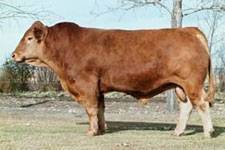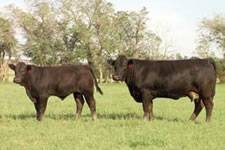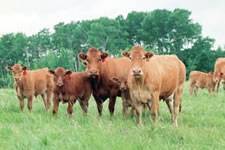Canadian Gelbvieh Association
Gelbvieh (pronounced Gelp-fee) cattle were developed in the Bavarian region of Germany in the early 19th century. Gelbvieh bulls were first imported into Canada in 1972, and the Canadian Gelbvieh Association (CGA) was organized the same year.
The CGA has maintained the strong performance heritage of the German Gelbvieh breeders with a policy of
mandatory performance records. In cooperation with the American Gelbvieh Association, this has produced a
database of well over one million performance records that result in an annual Sire Summary, Cow recognition
Program, International EPD's for all registered Gelbvieh, and a powerful source of documented information for
cattlemen raising Gelbvieh on both the commercial and purebred level.
Astute cattlemen across the continent have abandoned the path of single-trait selection and returned to balanced
selection including the maternal side of the cattle business. Gelbvieh "mother" traits of fertility, milking ability,
moderate size and docile temperament have become more important than ever before, making Gelbvieh the obvious
choice for crossbreeding programs. The percentage Gelbvieh female is one of the most sought-after replacements in
the industry.
The CGA has continued to emphasize maternal traits through its annual Cow Recognition Program. Other projects
include an udder and teat scoring system to assist breeders in recognizing and producing efficient females, and
mature cow size reporting to assist in maintaining moderate size in Gelbvieh females.
Vigorous at birth, Gelbvieh calves wean off heavy and gain rapidly. Documented progeny tests, impressive feed
efficiency and lean/muscular carcasses round out the roster of breed's characteristics that have made Gelbvieh
popular with cow/calf operators, feeders, packers and consumers.


